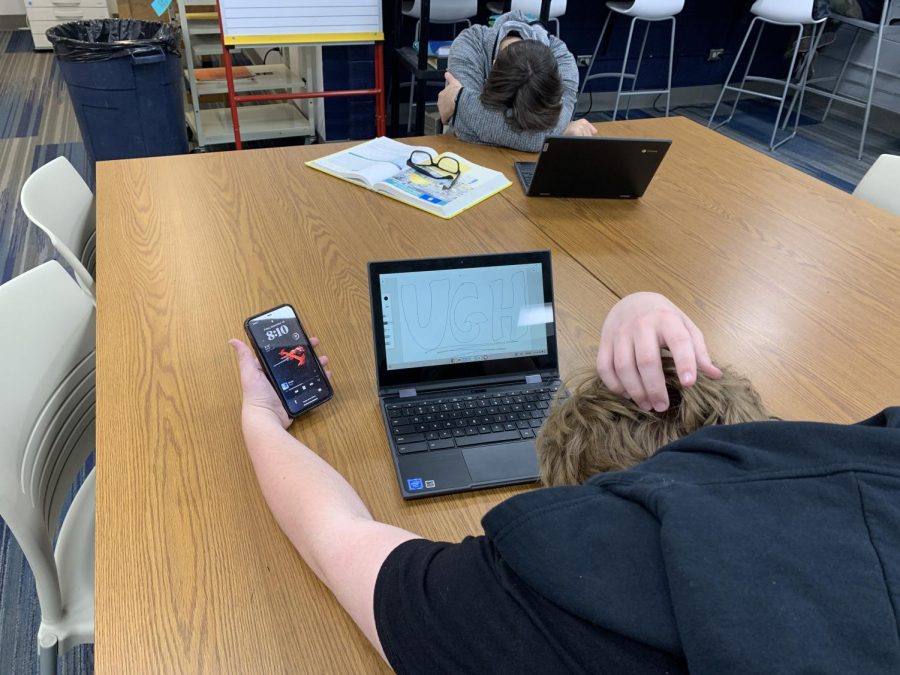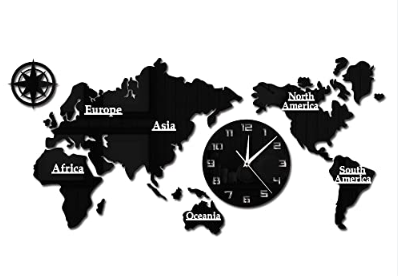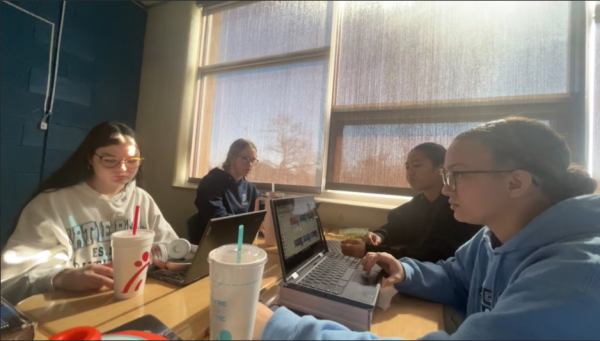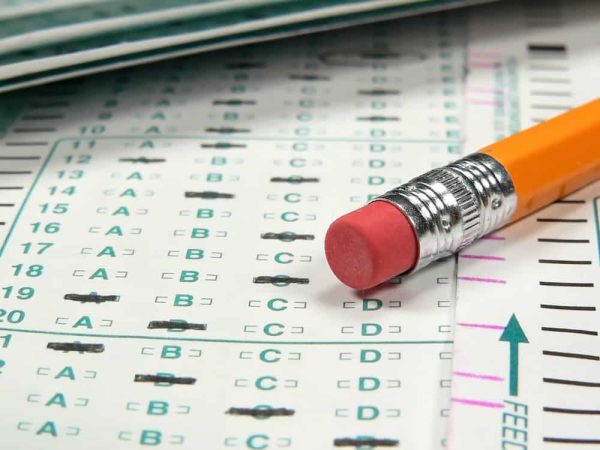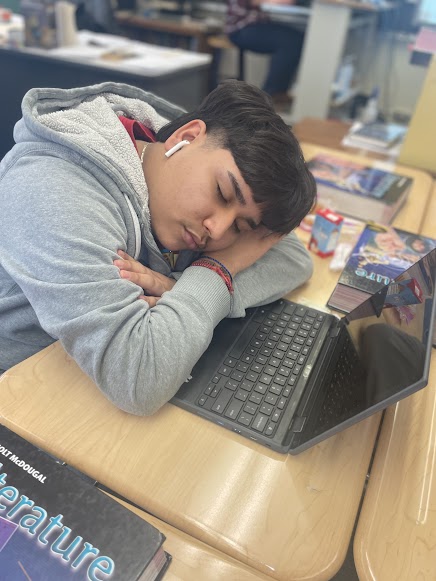What American schools could learn from homeworkless Finnish schools
The United States of America is generally characterized by its prosperous economy, extensive career paths, and boundless opportunities to find success regardless of class. However, our nation has many flawed institutions despite being one of the top ranking countries in the world. Arguably, one of our most flawed systems is the education system.
U.S. Schools still follow an outdated system from the industrial era and teach students to follow orders, sit still, and be quiet much like factory workers. Students also follow a pattern of memorizing then forgetting insignificant information.
Finland’s school system followed a similar structure until they incorporated major reforms after they realized, with extensive research, that their students were not benefitting enough from their education.
Finland began implementing more incentives for hard working teachers, but in turn, the school system required teachers to earn master’s degrees. These methods ensured that students would receive the best quality education with more motivated and experienced teachers, unlike in the U.S. where teachers are underpaid and aren’t expected to meet the same educational requirements.
Finland’s schools are federally funded as well, unlike the U.S. schools that are heavily divided by state funding. United States schools function on different levels varying from state to state. Southern states often cut educational funding more than northern states and their schools are hindered as a result. There are also “good schools” and “bad schools,” in northern states, while in Finland all schools are considered equal in quality.
While drastic economic solutions are easier said than done, moving education towards federal funding, increasing teacher pay, and lastly establishing more educational requirements for teachers would benefit schools across the United States and begin lifting our education system out of the mud.
One of the most simple yet most important things that Finnish schools incorporated for the students was a change in schedule. They began to see sleep as a priority for their students. Today, adolescents in Finland begin school closer to 9:00am-9:45am and it ends around 2:00-2:45pm, meaning that the average school day is roughly 5 hours long compared to the much longer American school day.
This type of schedule is much healthier for adolescent students since they get much more sleep and can attend school at a time in which their brains are fully functional. According to experts, teens aren’t fully alert until around 9-10am, so if they attend school earlier they will be more sluggish and less functional. (The Telegraph, 2004).
In the United States, high school students attend school at 8:00am or earlier and end around 3:00-3:30pm meaning that there are six and a half to seven hours in the school day. This schedule contradicts the adolescent circadian cycle.
The circadian cycle is a cycle that humans and animals bodies go through during a 24 hour cycle. It involves fluctuating hormone production to control functions such as sleep and appetite. It varies based on age groups but teens cycle is the most unique of all age groups because they get tired later, wake up later, and need more sleep than children and adults, meaning that they require more time to sleep in during the morning.
Since teens tend to get tired around 11pm and are often up later to meet homework demands, American students often end up sleep deprived. (Sleep Foundation, 2022).
Most teenagers need nine and a quarter hours of sleep but only get six and a half to seven hours. While excess screen time can play into their lack of sleep, lack of sleep is generally a result of schools not accommodating to their circadian cycle along with job, extracurricular, and schoolwork demands. Finnish schools, on the other hand, see sleep as a priority for their students. Adolescents in Finland begin school closer to 9:00am-9:45am and it ends around 2:00-2:45pm, meaning that the average school day is roughly 5 hours long compared to the much longer American school day. This type of schedule is much healthier for adolescent students since they get much more sleep and can attend school at a time in which their brains are fully functional. According to experts, teenagers aren’t fully alert until around 9-10am, so if they attend school earlier they will be more sluggish and less functional. (Telegraph, 2014).
In addition to shortening their day, Finnish schools also offer longer breaks, lunch hours, and recess time.
While many teachers in Finland were initially apprehensive about cutting students instructional time in the place of more breaks, this method proved to be effective in helping students focus better.
Many teachers noticed that their students had more energy and were able to focus substantially better when given 15 minute breaks after every 45 minutes of instruction rather than the previous 5 minute breaks that they had like we do in the U.S.
If U.S. schools began implementing these schedules as well, students will likely show academic improvement much like Finnish students have. More breaks and independent time helps lessen burnout and increase productivity.
Our culture in the U.S. is so centered around encouraging students to grind relentlessly. The justification for this lifestyle is generally that it pays off and working harder is more beneficial, when in actuality, working too hard often harms student’s mental and physical health and decreases their productivity.
Additionally, American schools have an obsession with competition and coming out on top. Our schools are fueled by top SAT scores, being valedictorian, and taking the most advanced placement courses in order to attend a high status university.
Some teachers in the US also prioritize students that are top scorers and those who are struggling end up being overlooked.
This fixation doesn’t actually help students improve academically but rather hinders them by causing them to burnout.
Finland, on the other hand, fosters teamwork and universal goals rather than the desire to come out on top. Their schools don’t have comparisons, rankings, or competition between students, schools, or regions.
This method allows students to help each other grow and helps boost academic improvement for a select few, Students rarely get left behind as well.
Lastly, Finland’s schools accommodate young, energetic students and those with common learning disabilities far better than we do in the United States. Finnish educators understand that it is crucial for children to release energy, play, and find ways to learn that interest them rather than following a standard template that doesn’t fit every student.
This learning style is particularly important for kids with ADHD, especially since their needs are so overlooked in the U.S., even with IEP’s. Our strategy of bland, “cookie cutter” tasks and sitting still simply doesn’t work.
It is time that we, as a nation, step up and stop accepting the bare minimum. The students of our country deserve better and should look to Finland’s tactics to begin paving the way to a more beneficial future for our education system.
Sources:

I joined Guilford’s newspaper team to enhance my writing skills so that I have a better understanding of different literature styles and editing techniques....


